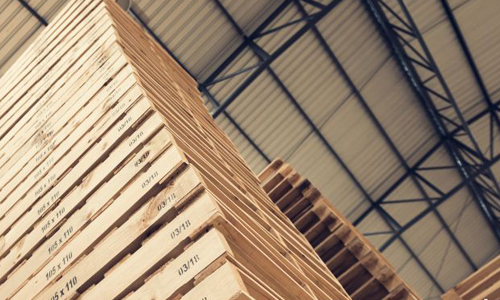Stack It Up- How To Stack heavy Duty Pallet Racking
-

When you’re managing a warehouse, one of the biggest things you need to take into consideration is how to manage pallets. Stacking them on top of one another is a good way to make use of your vertical space in the warehouse. But you can only stack pallets, especially heavy-duty pallets, about two high before things get dangerous. Heavy-duty pallet racking can be a great way to make the most of your warehouse space and keep your employees safe at the same time. But good pallet racking requires proper organization, training, and upkeep. Read on to learn how to manage heavy-duty pallet racking the smart way.
Why Use Pallet Racking
One of the biggest reasons to use pallet racking is that it helps you take full advantage of your warehouse space. Vertical space is too often underused, and you can only stack pallets two high or so before they become a safety hazard. A pallet racking framework lets you safely stack all the way to the top of your warehouse, saving you money in warehousing costs.
Pallet racking also makes it much easier to get to any given pallet at any time. When you’re dealing with stacks of pallets, you may have to move a few stacks around to get to the pallet you want. Pallet racking makes it convenient to access any of your products with no rearranging needed.
Understand Rack Weight
The first step to successful pallet racking is to understand your rack weight. Overloaded pallets can pose a huge safety threat, as they can tip over or collapse inwards on themselves. But on the flip side, underloading your pallets will cost you more in storage capacity.
Make sure you understand the safe weight limit range for your pallet rack on either end. Post those weight limits for all your employees to see so they know how much to load and unload. And in general, put the heaviest loads on the bottom of the rack, and if you’re using rack uprights, make sure they’re able to support your heaviest loads.
Prioritize Even Distribution
It can be easy to think that as long as the entire rack has a pallet on it somewhere, your weight distribution will be fine. But when you’re working with heavy loads, the slightest imbalance could cause your rack to tip over. You need to make sure that all of your employees are trained in how to safely distribute your pallets.
Make sure all of your employees are educated about how to strategically place items to keep weight distribution even. It’s also crucial to train your employees in safe forklift use. In 2017, there were more than 9,000 non-fatal accidents involving forklifts and 74 deaths; make sure your workplace isn’t part of the statistics for 2020.
Use ERP Software
Enterprise resource planning software can be an enormously helpful tool for managing warehouses. These programs allow you to keep track of every area of your business, from ordering to warehousing to delivery. When you’re trying to manage pallet racking, you need a good solid system to help everyone know where to find things.
Use ERP software to keep up with how much of each item you have in your warehouse and where it is. This will help you avoid either running short on products or double-ordering when you already have something. It will also make your warehouse team more efficient, as they’ll have an easier time finding what they’re looking for and communicating with both your order fulfillment and your purchasing departments.
Make Repairs And Replacements
When you’re dealing with warehousing, it can be easy to overlook small repairs and replacements that are needed. Sure, there’s a spot of rust or a ding on that beam, or that shelf has started to sag a little. But when you’re loading heavy pallets onto racks, any tiny ding could represent dangerous structural damage.
Make sure you’re inspecting your racks and equipment on a regular basis and noting any problems or damage. Make arrangements to repair or replace the part as soon as possible before it has a chance to get worse or cause a major accident. You should also put together a checklist of problems to look for and what to do if they arise so everyone in your company can keep working efficiently and safely.
Let The Pallets Breathe
When you’re trying to fill a warehouse space, it can be easy to line the walls with pallet racks and work your way into the middle. But placing racks against the wall like this is a bad way to design your system. Not only does it make it harder to look for potential problems, but it also renders a portion of your rack inaccessible.
Instead, leave your racks plenty of room around the edges. Start on one end of the warehouse, leaving enough room between the wall and the rack for a forklift to maneuver. Then move across the warehouse, placing racks far enough apart for your forklifts to move between them.
Learn More About Heavy Duty Pallet Racking
Heavy-duty pallet racking requires a lot of careful engineering and training. But done properly, it can help you make the most of your warehouse space and your employees’ time. Make sure you’re training your employees on how to safely manage your pallet racks and keep up to date on repairs and replacement.
If you’d like to get pallet racking set up at your warehouse, check out the rest of our site at Raymond Arbor Material Handling. Our warehouse storage experts can provide a full suite of options that can improve process and throughput in your facility. Contact us today to start working smarter, not harder in your warehouses.

